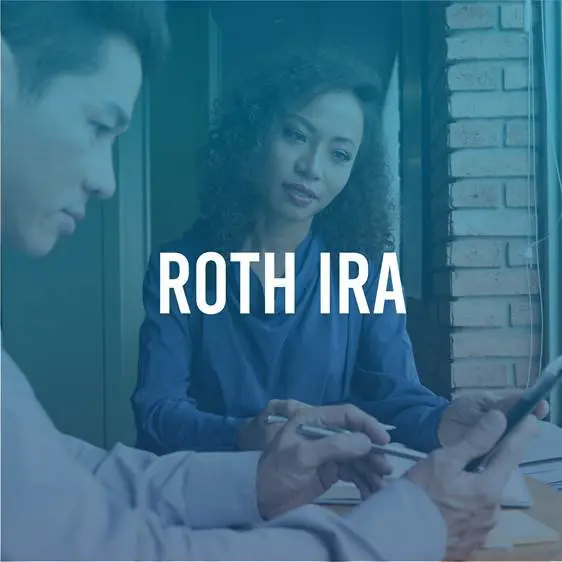
What is a Roth IRA? The Roth IRA provides a way to save for retirement with tax-free earnings. Congress created the Roth under the “Tax Relief Act of 1997”. This was 23 years after the Traditional IRA was established. As a result, the Roth is the newest IRA type.
Deadlines
The deadline to open a Roth IRA and make a prior year contribution is April 15th of the following year (or the tax filing deadline). For example, for 2023, you have until April 18th of 2023 to open an account and make the 2022 contribution. The Roth contribution is not tax deductible, like a Traditional contribution often is. As always, discuss retirement contributions with your tax professional.
Roth Contributions
The maximum contribution to a Roth for 2023 is $6,500 if under 50 and $7,500 if over 50. To be eligible to make a Roth contribution, you must have eligible compensation. You must also have modified adjusted gross income (MAGI) less than $153,000 if single or $228,000 if married, filing a joint tax return. If you do not have income, but your spouse does, you can still be eligible if your MAGI is under $228,000 and you file a joint tax return.
2023 Roth MAGI Limits for Regular IRA Contributions
Filing Status: MAGI for Full MAGI for Partial Ineligible for Roth
Contribution Contribution Contributions
Single Up to $138,000 $125,000-$153,000 Over $153,000
Married,
filing jointly Up to $218,000 $218,000-$228,000 Over $228,000
Married,
filing separately $0 $0-$10,000 Over $10,000
Eligible Compensation
Modified Adjusted Gross Income (MAGI) used to determine eligibility is defined as Adjusted Gross Income (AGI) from your tax return. It is then modified by subtracting income from a Roth conversion, and adding any IRA deductions, student loan interest deduction, tuition and fees deduction, foreign earned income exclusion, foreign housing exclusion, exclusion of qualified savings bond interest, exclusion of interest from Series EE and I US Savings Bonds issued after 1989, exclusion of adoption expenses, Qualified Adoption Expenses and domestic activities deductions from Form 8903.
Eligible compensation includes the following: Wages, Salaries, Tips, Bonuses, Commissions, Professional fees, Combat pay, (Certain stipend, fellowship and similar payments to graduate students) and “Difficulty of care” payments. The account holder is responsible for determining if your income qualifies. You should use the services of a competent tax advisor.
Roth IRA Distributions
First off, you are not required to take distributions from a Roth IRA. You often hear that Roth funds grow tax exempt. While that can be true, the distributions must meet two requirements to be truly tax-free. 1) The account holder must have had a Roth IRA for at least five years and 2) have a qualified reason. This tax-free status applies to Profits, Conversions and Rollovers. Contributions can always be taken without taxes or penalties. The five-year period is started when you first open a Roth account. It does not matter if you move the account or have more than one Roth account. Qualified reasons include being over 59 1/2, Deceased, Disabled or a First-time home-buyer. A First-time home-buyer is someone who has not owned a house in the past two years.
If the distribution is not qualified, you may be subject to taxation and a 10% penalty for early distribution.
It is also important to understand that all IRA’s, including the Roth are subject to both Unrelated Debt Financed Income tax (UDFI) and Unrelated Business Income tax (UBIT). These are IRA taxes, not personal income taxes. You can learn about these two taxes on the IRS’s website HERE.
Roth Conversions
Can you change your Traditional IRA (or SEP IRA) account into a Roth IRA? The answer is yes. To accomplish this, open a Roth account and complete a Conversion form. The process generally takes a day or so. You will receive a 1099 for the amount converted, which you will file with your personal income tax report. If you move over the Traditional funds and do not already have a Traditional IRA with us, you will also need to open a Traditional IRA to accept the funds before the Conversion occurs.
Always discuss a Roth Conversion with your tax advisor in advance because the conversion is a table event. The opportunity to do a “Roth Recharacterization” (un-doing a Roth conversion) is a thing of the past and is no longer allowed by the IRS.
Back-Door Roth
If you are making too much money to do a direct Roth Contribution you could possibly do a Traditional Contribution and then turn around and do a Conversion of that Contribution. It is often referred to as a “Back-Door Roth”. While there are income limits on Contributions there are not income limits on Conversions. You can also convert a SEP IRA and a SIMPLE IRA to a Roth. A SIMPLE IRA must be over two years old before a Conversion is allowed. Again, you should always discuss your plans with your tax advisor.
If you have further questions about Roth IRAs, or any other self-directed account, please call uDirect IRA Services at (866) 447-6598 or e-mail us at info@uDirectIRA.com.

